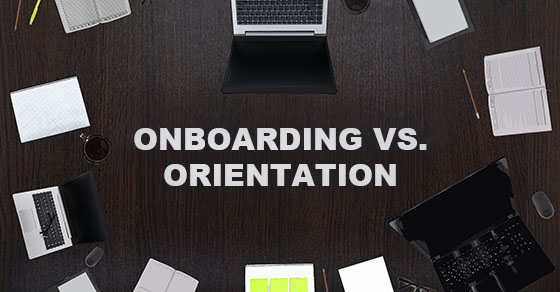Information Center
EMPLOYER TAX BRIEF
Onboarding vs. orientation: Is there a difference?

It’s a historically difficult time for employers to hire. What this means, other than the obvious, is that if your organization is fortunate enough to find and win over a job candidate, “onboarding” is more important than ever.
The Society for Human Resource Management, commonly known as simply “SHRM,” defines onboarding as “the overall process of welcoming a new employee to your organization, the process of integrating a new employee with a company and its culture, as well as getting a new hire the tools and information needed to become a productive member of the team.”
Sounds simple enough, right? It’s anything but.
Many employers struggle to perfect their onboarding processes. Some don’t even have one at all. Yet the importance of getting an employee acclimated and comfortable with your work environment is critical to increasing the odds that he or she will stick around and won’t send you diving back into the decidedly shallow hiring pool.
An important point to keep in mind is that onboarding isn’t synonymous with orientation. Rather, orientation is typically regarded as only the administrative part of onboarding — though an important part nonetheless.
Day by day
You can reduce the pressure on new employees with an extended, step-by-step approach to orientation. This enables you to present information about your organization in bite-size pieces that new hires can readily digest. Most people hope to fall in love with, or at least really like, a new employer. Cramming paperwork, introductions, tours and lectures about organizational philosophy into one hectic day is probably not the way to get a working relationship off on the right foot.
To the extent possible, set aside one day solely for paperwork, security checks and other administrative matters. This gives new hires time to review employee manuals, company rules and benefit plans. Then reserve another full day for tours of the workplace and for initial meetings — perhaps even lunch with the supervisor and coworkers, if feasible.
After your new hire has spent a week or so on the job, schedule another session to discuss organizational philosophy, incentive programs, and the types of advanced training and career paths they can pursue. By this time, the employee is likely to have at least several substantive questions about the position and your organization’s policies. So, this creates the perfect opportunity to talk about these and other related subjects.
The story is just beginning
A gradual, thorough orientation helps new hires truly see that you want them to have a long and productive career with your organization. And from there, the rest of the onboarding process can play out. But that’s a story for another day.